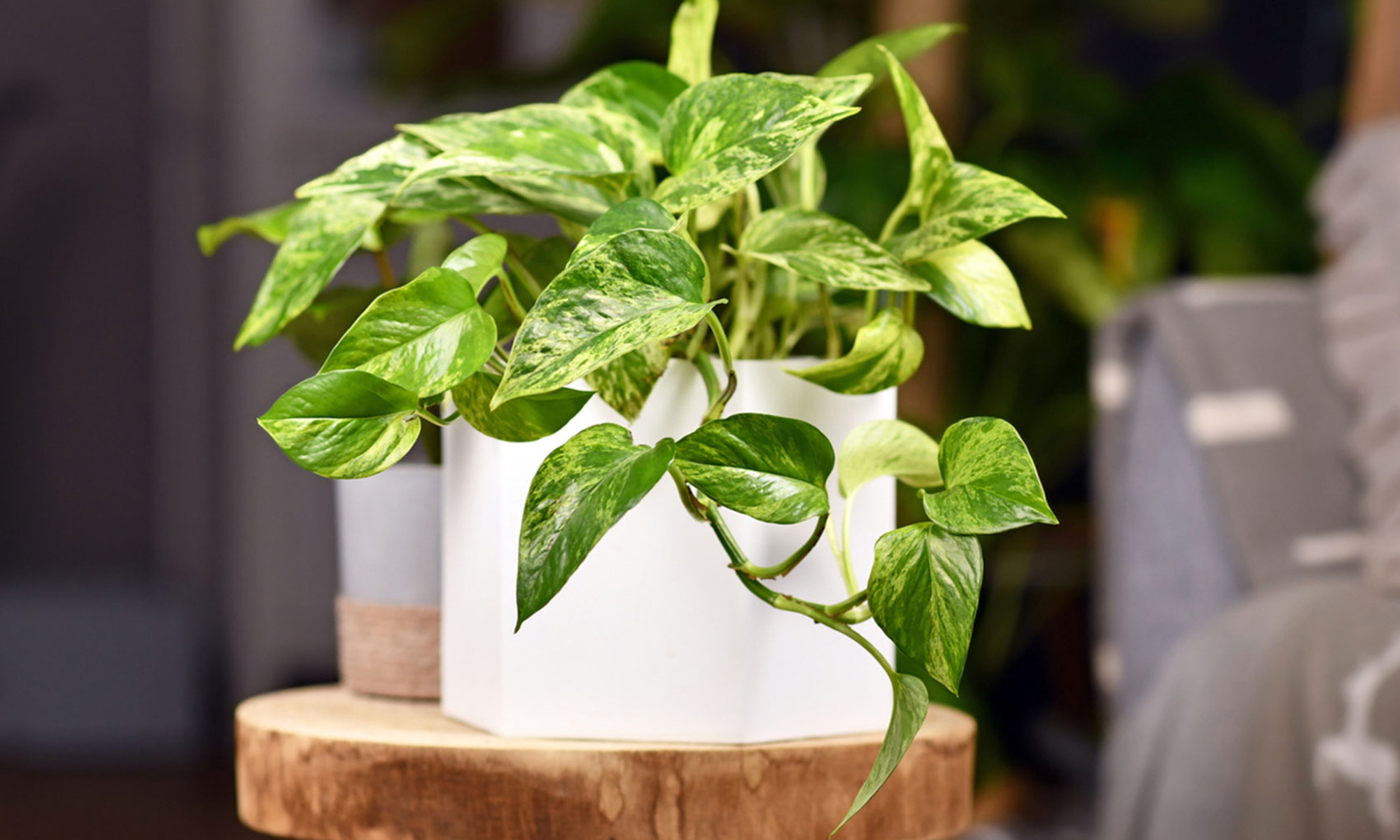The photo is a common plant that almost everyone who likes plants has had in their home at some point. Its leaves are bright green but with spots combining a lighter green with a darker one with a little yellow.
The photo is a hanging or climbing houseplant. It is widely used on balconies because it is a plant that can be hung and its branches guided wherever we want. We can put a cane or rope where we want it to travel and it will hold on by itself with its flying roots.
It reproduces and grows without care, at least apparently. But in today’s article, we are going to tell you a series of tricks that you have to take into account so that you can learn a little more about how to take care of a pothos.
What do you need to take care of a pothos?
- Poto.
- Cutting.
- Pot.
- Substratum.
- Watering can with water.
- Sprayer.
- Wet rag.
Instructions for caring for a pothos
- If a potho plant receives too much water, white spots appear on the leaves. Those spots are a fungus. This occurs when there is too much humidity and heat.
- It is recommended that the plant be in an environment between 13 and 24 degrees Celsius; realize that it is a tropical plant.
- Never leave a plate with water under the poto; we cause it to have that humidity again because the plant is constantly self-watering, so the fungi that we mentioned in the previous point will come out again. With what finally, it will rot due to excess water since the poto is a water reservoir in itself.
- No direct light. This type of light yellows the plant, so it must have indirect light.
- Water the plant when the substrate or soil is completely dry.
- The stems can reach up to two meters in length. But it is not convenient to leave them so long. To do this, it must be blunted so that new shoots come out and the plant gains in leafiness.
- Compost will be provided in the spring and summer. To do this, just a few bars of special fertilizer for green leafy plants. The bar will be added every 15 or 20 days, especially during the growing season. The bar sticks into the substrate, which will gradually dissolve as we water it.
- Playback is very. We cut a cutting. The stem would be cut below the node. Remove the leaves from the bottom area and leave two or three leaves on top. We put it in water and when the root comes out we put it in the ground. To do this we will spread a little clay at the base of the earth so that it has drainage. Then we will put a substrate that is very loose. Make a hole with your fingers to make a hole. Bury the root in the substrate. Now add a little more substrate. Press the substrate well so that it anchors the root well and there are no gaps. Water it.
- The poto needs environmental humidity and with the heat of the houses it is convenient to spray it often. With sprayer pour water on the leaves and in this way we avoid brown spots.
- With a damp cloth clean the leaves to prevent dust from accumulating on them. In this way the plant will breathe much better.
Tips for caring for a pothos
- The problem with the fungus is that it does not stay in the poto, but if we have other plants at home they can end up having fungus as well, even if they are of another species.
- When transplanting, growth hormones can be used so that the roots come out earlier, but since it is a very simple plant, it is recommended that it removes them naturally by putting the cutting in the water.
- In the event that you want your poto to be thicker, to have more leaves, and not to branch out into pendants. You will have to prune it around the plant. The more you prune the growth of the plant is stimulated. Keep in mind that the effect of the pruning will not be immediate. For its foliage to be abundant, three to four years must pass.
- Remember not to overwater the plant or brown spots will begin to appear on the leaves, causing them to dry out and die. The usual thing is to water it every five days in summer and every ten in winter. But always check the humidity of the soil and only water it if it is completely dry.
- If it is not hung you can also use a plate and place stones on it. Now if you can pour water on the plate. This will keep it humid when the water in this dish evaporates, but the plant will not be able to absorb the water as it is raised on the stones.
- It is not convenient to change the pot often. The first time you change it, try to make it two years old.

















